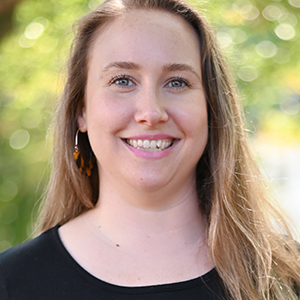Avoid the Dumpster Fire: Tech Initiatives That Actually Make an Impact
,
Colorado Convention Center, Bluebird Ballroom Lobby, Table 7
Presenters


Session description
Purpose & objective
The purpose of our presentation is to share our journey of implementing a division-wide Microsoft Teams initiative to support teaching and learning in the face of teacher shortages, burnout, and learning gaps. Participants will walk away knowing how to:
Implement a schoolwide technology initiative that branches into individual professional use, professional learning communities, student data collection for reading and SEL that encourages authentic use and buy-in
Use strategies to deploy a tool, such as Microsoft Teams, that supports the work of teachers, rather than forcing them to change to fit a specific technology tool.
Use Microsoft Teams for diverse and inclusive teaching and learning across various grades, subjects, and backgrounds.
Inspire fellow educators by implementing our shared strategies or components of the Diffiusion Theory of Innovation to support technology initiatives in their own schools or districts.
We will also address the following aspects of our presentation:
Educational or infrastructure challenge/situation: We faced a dilemma of teacher shortages and burnout due to the pandemic and the increased demands of virtual and hybrid learning. We also faced learning gaps among students who needed more support and engagement. We needed a technology intervention that would help us address these challenges and improve teaching and learning outcomes. Knowing that teachers are constantly faced with new directives and tools, we did not want teachers to see this initiative as “one more thing.”
Technology intervention: We chose Microsoft Teams as our technology intervention because it is a platform that integrates communication, collaboration, feedback, assessment, differentiation, and personalization. It also allows us to create engaging and interactive learning experiences that cater to the diverse needs of students. We will describe how we used Teams for various purposes such as lesson design, instruction, assessment, professional learning, and innovation.
Models employed: We will explain how theories such as the Diffusion Theory of Innovation and Adult Learning helped us plan, execute, evaluate, and improve our Teams initiative.
Lesson plans or instructional activities/strategies employed: We will share some examples of how we encouraged the use of Teams such as creating Teams for subcomittees and subgroups, lesson plans, student needs documentation, communication, morning announcements, and class teams.
Evidence of success: We will present some evidence of success that we collected from our Teams initiative such as usage data, feedback surveys, student work samples, teacher reflections, test scores, attendance rates, engagement levels, and more. We will also share some of the challenges we faced and how we overcame them or learned from them.
We hope that our presentation about our journey using Microsoft Teams will help other school and district leaders implement initiatives that are meaningful and impactful. We also hope that our presentation will spark a dialogue among educators about how to use technology to empower teachers and learners in innovative ways.
Outline
The presenters will share their diverse backgrounds and how they contributed to the successful implementation of Microsoft Teams at The Epstein School. The audience will relate to the presenters and their stories and feel more engaged in the discussion.
The presenters will also explain the challenges of using multiple technology formats in a school setting, and how Microsoft Teams offered a solution for streamlining communication and collaboration.
The presenters will describe how they introduced Microsoft Teams to the faculty and students, without imposing it on them. They will highlight the feedback they received from the early adopters, and how they used it to improve the product and address any issues before a final rollout took place. They will also show how Microsoft Teams can meet the various needs of different users and scenarios.
While showing the different tools of Teams, presenters will engage the audience by creating and sharing the benefits of Microsoft Teams in real time. During this, the presenters will connect with the audience by asking the question, “how will your biggest nay sayer poke holes through this?” This question will not only support a lively discussion, it will encourage collaborat4ion and support from the audience.
As the session closes, the presenters will ask the participants to outline their plan of implementation. These outlines will be shared with their table then a whole group to support the idea of collaboration.
Time:
Background: 10 minutes
Implementation and Demonstration of program tools: 35 minutes
Outline and Discussion: 15 minutes
Process: Interactive Digital Whiteboard to share the outlines and group discussions
Peer to Peer discussion
Whole group discussion
Supporting research
https://www.asaecenter.org/resources/articles/an_plus/2017/september/rethinking-the-change-adoption-curve/
https://support.microsoft.com/en-us/topic/getting-started-with-reading-progress-in-teams-7617c11c-d685-4cb7-8b75-3917b297c407
https://techcommunity.microsoft.com/t5/education-blog/reading-progress-in-microsoft-teams-improve-student-reading/ba-p/2315377
https://learn.microsoft.com/en-us/training/educator-center/product-guides/reading-progress/
https://www.theverge.com/2021/5/4/22418855/microsoft-teams-reading-progress-fluency-feature
https://educationblog.microsoft.com/en-us/2022/08/new-teams-features-help-improve-your-classrooms-well-being
https://reflect.microsoft.com/
https://www.edutopia.org/article/implementing-educational-technology
https://tech.ed.gov/files/2017/01/NETP17.pdf
https://sphweb.bumc.bu.edu/otlt/MPH-Modules/SB/BehavioralChangeTheories/BehavioralChangeTheories4.html
Session specifications
Laptop: Mac, PC
Tablet: Android, iOS, Windows
Web browser
Empowering Leader
- Inspire a culture of innovation and collaboration that allows the time and space to explore and experiment with digital tools.
- Support educators in using technology to advance learning that meets the diverse learning, cultural, and social-emotional needs of individual students.
 Return
Return Participate and share: Poster
Participate and share: Poster  Trips and Tours
Trips and Tours